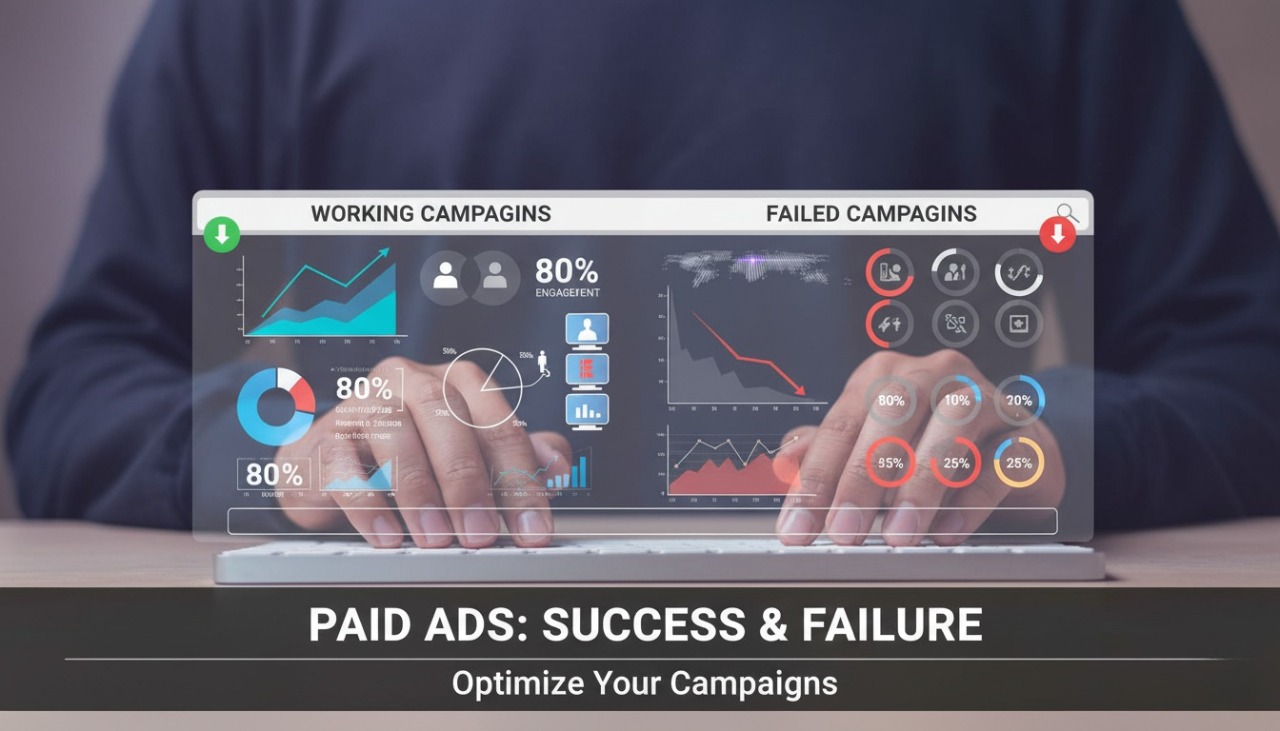Let’s talk about something every business owner wonders at some point: why do some paid ad campaigns bring in a flood of customers while others drain your budget with almost nothing to show for it? It’s a frustrating question, and the truth is, most businesses face it.
Paid advertising has the potential to deliver instant results, but only when it’s done with the right approach. So, let’s sit down and walk through what makes paid ads truly work and why most of them fail, in a way that’s easy to understand and even easier to apply.
The Real Power of Paid Ads
Paid ads are one of the fastest ways to grab attention online. Whether they appear on Google, Facebook, Instagram, or YouTube, they can reach thousands of people in a matter of hours.
Think of them as a shortcut to visibility, while organic marketing builds slowly over time, paid ads can instantly put your brand in front of potential customers.
But here’s the thing: visibility doesn’t guarantee success. Many businesses run ads, get clicks, but never see those clicks turn into actual sales. According to marketing insights, the average click-through rate for search ads hovers around six percent, which means only six out of every hundred people who see an ad actually click on it. And of those clicks, only a small portion convert into real customers. That’s where strategy becomes everything.
Why Paid Ads Work When They Do
When paid ads work, it’s not luck. There’s a clear, thought-out plan behind every successful campaign. Let’s break down the elements that make them click.
1. Smart Targeting
The most effective paid ads know exactly who they’re talking to. Instead of trying to reach everyone, they speak directly to a well-defined audience. Ads that target specific interests, behaviors, and search intentions perform far better because they feel personal. Studies show that consumers are far more likely to engage with ads that feel relevant to their needs.
2. Clear and Compelling Messages
Good ads don’t just say “buy now.” They create curiosity and show value. A powerful ad headline and a short, clear message make a big difference. People scroll fast, so your message needs to catch attention immediately. The best campaigns use emotional or practical triggers, like saving time, reducing stress, or solving a specific problem.
3. Consistent Experience
If someone clicks an ad and lands on a page that looks or feels completely different from the ad, you’ve lost them. Consistency builds trust. The landing page should carry the same tone, colors, and promises made in the ad. Even a small mismatch can reduce conversions drastically.
4. Building Trust and Credibility
Here’s something that many advertisers overlook, people don’t just buy products; they buy trust. Before making a purchase, customers look for signs that a brand is reliable. That’s where reviews, testimonials, and online reputation play a crucial role.
Businesses that use trusted reputation management services like Online Boost often perform better because their positive reviews give customers the confidence to click and buy.
The Common Reasons Campaigns Fail
Now, let’s flip the coin and talk about why so many ad campaigns simply don’t work.
1. No Clear Objective
Many businesses start advertising without knowing what they want to achieve. Are they trying to generate leads, increase traffic, or make direct sales? Without a clear goal, there’s no way to measure success. Ads need a specific direction to produce results.
2. Poor Audience Selection
Even the most creative ad will fail if it’s shown to the wrong people. Targeting is everything. A business selling high-end services won’t get good results by targeting people looking for discounts. When you target the wrong audience, you’re wasting every impression and every dollar.
3. Weak Landing Pages
An ad might do its job perfectly by getting a user to click, but what happens after that is even more important. A slow, unconvincing, or cluttered landing page kills conversions. Even a one-second delay in loading time can cause a noticeable drop in sales. The page should load fast, look professional, and clearly guide the visitor toward taking action.
4. No Data Tracking or Testing
Many advertisers set up campaigns and never check what’s actually working. They don’t analyze data, test variations, or make improvements. Successful marketers constantly adjust their ads testing headlines, visuals, and audience settings, to improve results over time.
5. Ignoring Social Proof
In digital marketing, social proof is a powerful influencer. People trust other people more than they trust businesses. Reviews, ratings, and feedback often decide whether a user clicks or scrolls past. That’s why it’s crucial to maintain a strong online reputation.
Businesses that Buy Google Reviews from authentic providers like Online Boost often see a noticeable difference in how customers respond to their ads. When potential buyers see positive feedback, it builds instant credibility, leading to better engagement and higher conversions.
How to Make Paid Ads Work for Your Business
Let’s make this practical. If you want your paid ads to actually deliver, here are some simple but powerful steps:
-
Define your goal clearly. Know what success looks like before you start spending.
-
Know your audience inside out. Understand who they are, what they care about, and where they spend time online.
-
Write messages that connect emotionally. Focus on benefits, not just features.
-
Keep your landing pages clean and fast. Make sure they’re designed for conversion.
-
Use reviews and testimonials. Showcase proof of your reliability through real customer experiences.
-
Track your data. Don’t guess — use insights to make decisions and improve performance.
When all of these elements come together, your ads start working smarter, not harder.
The Bigger Picture
Paid ads are not just about throwing money at a problem. They’re about using money strategically to reach the right people at the right time. When businesses understand that, they stop wasting their ad budget and start seeing real growth.
Think of it this way, every ad impression is a chance to make an impression. Every click is a potential customer. And every satisfied customer becomes a brand ambassador.
The difference between failure and success lies in the details — clear messaging, relevant targeting, consistent branding, and strong social proof.
For more insights on how online reviews can strengthen your brand reputation,
Click here to read the full article.


